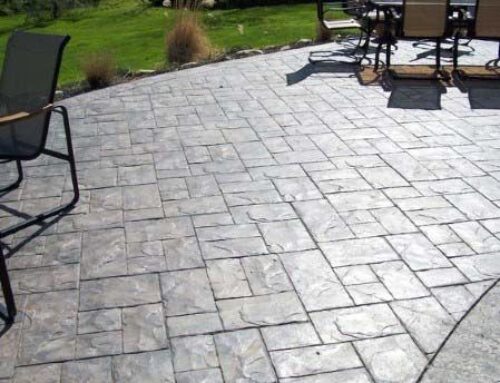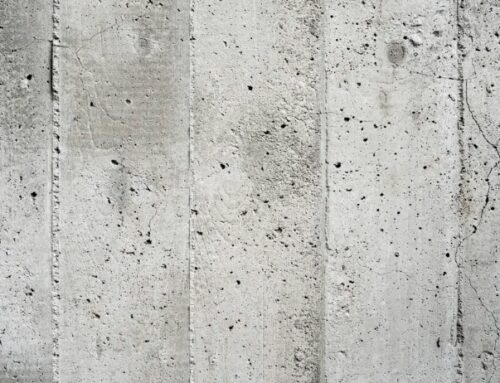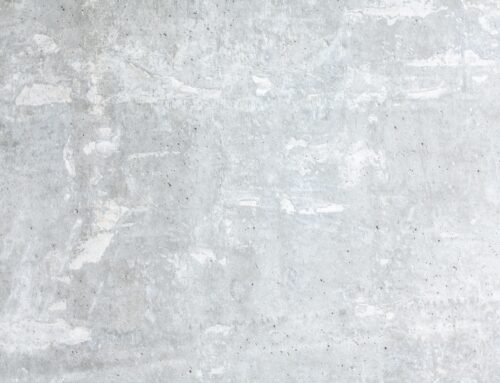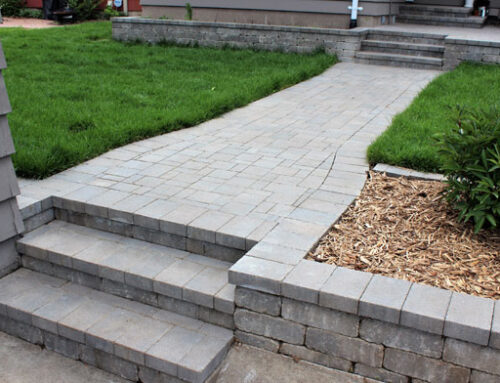DIY vs. Professional Stamped Concrete
Are you considering stamped concrete for your home or business but are unsure if you should take on the project yourself or hire a professional? This guide will help you understand the differences, benefits, and drawbacks of both DIY and professional stamped concrete so that you can make an informed decision.
What is Stamped Concrete?
Stamped concrete is a type of concrete that is textured or patterned to resemble brick, stone, slate, flagstone, or other materials. It is commonly used for patios, driveways, walkways, and pool decks because it provides a slip-resistant surface that is also durable and easy to maintain.
What is the Stamped Concrete Installation Process?
The stamped concrete installation process is fairly straightforward. First, the concrete is poured and leveled. Once it has cured, a release agent is applied to prevent the stamps from sticking to the concrete. Then, the stamps are pressed into the concrete, and a texturing tool is used to create the desired pattern. Finally, a sealer is applied to protect the surface from weathering and staining.
What are the Differences Between DIY and Professional Stamped Concrete?
One of the biggest differences between DIY and professional stamped concrete is the quality of the finished product. When you hire a professional, you can ensure that your stamped concrete will be evenly textured, properly proportioned, and free of flaws. DIY projects often suffer from these problems because they are difficult to achieve without the right tools and experience.
Another difference between DIY and professional stamped concrete is the cost. Professional stamped concrete can be more expensive than DIY, but it is also likely to last longer and require less maintenance.
What are the Benefits of Each One?
There are several benefits to both DIY and professional stamped concrete.
DIY benefits include:
– Lower initial cost
– Greater control over the design
– Can be done as a weekend project
Professional benefits include:
– Better quality overall
– Longer lasting
– Low maintenance
Cons of Each One
There are also several drawbacks to both DIY and professional stamped concrete.
DIY drawbacks include:
– Difficult to achieve a professional look
– Requires special tools and experience
– More likely to crack or chip
Professional drawbacks include:
– Higher initial cost
– Less control over the design
So, which one should you choose? Ultimately, the decision comes down to a matter of personal preference and budget. If you are willing to put in the time and effort to learn how to stamp concrete properly, then DIY may be the way to go. However, if you want the best possible results and are not concerned about the cost, then professional stamped concrete is the way to go.
Will I Need a Permit For a DIY Stamped Concrete Project?
In most cases, a permit is not required for a DIY stamped concrete project. However, it is always best to check with your local building department to be sure. They may have specific requirements or restrictions in place that you need to be aware of.
When you work with a professional stamped concrete contractor, they will typically take care of any permits that are required.
What Is the Average Cost of a Stamped Concrete Project?
The average cost of a stamped concrete project can vary depending on the size and complexity of the design. Generally, you can expect to pay between $8 and $20 per square foot. DIY projects will usually be on the lower end of that range, while professional projects will be on the higher end.
How Long Does It Take to Install Stamped Concrete?
The time it takes to install stamped concrete will also vary depending on the size and complexity of the design. A small, simple patio can usually be installed in one or two days. A larger, more complex patio may take several days to complete.
How Long Does Stamped Concrete Last?
Stamped concrete can last for many years when it is properly installed and maintained. However, it is not uncommon for it to start to show signs of wear after a few years. This is usually due to weathering or poor maintenance.
When Should I Seal My Stamped Concrete?
You should seal your stamped concrete as soon as it is installed. This will help protect it from weathering and staining. You should also reseal it every one or two years to maintain the best possible appearance.
Can I Put Stamped Concrete Over an Existing Concrete Patio?
In most cases, yes. However, you will need to make sure that the existing concrete is in good condition and is structurally sound. You will also need to add a base layer of gravel before installing the stamped concrete.
What Is the Best Way to Care for Stamped Concrete?
The best way to care for stamped concrete is to sweep it regularly and hose it down as needed. You should also seal it every one or two years. For more stubborn stains, you can use a mild detergent or cleaner. Avoid using harsh chemicals or cleaners, as they may damage the concrete.
Stamped concrete is a great way to add beauty and value to your home. It can be done as a DIY project or by a professional contractor. The choice of which one to use is a matter of personal preference and budget. Whichever option you choose, be sure to follow the proper care and maintenance instructions to keep your stamped concrete looking its best for many years to come.






